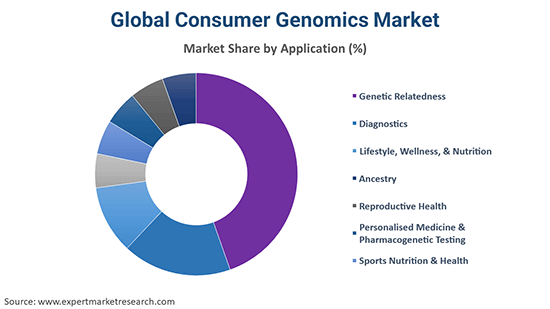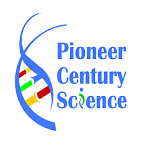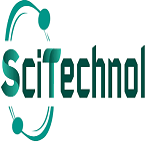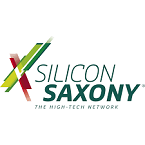Scientific Sessions
Track 1: Advances In Functional Genomics
The field of functional genomics ISFC-2023 attempts to describe the functions and relations of genes and proteins by making use of genome-wide approaches, in discrepancy to the gene- by- gene approach of classical molecular biology ways. Winham noted five major areas of advancement in inheritable/ genomics in 2019 to include 1) accelerated relinquishment; 2) interpretation of genomic data; 3) RNA interpretation; 4) liquid vivisection; and 5) reproductive health.
Track 2: Specific Molecular And Pathway Analysis
Pathway analysis is a important system for data analysis in genomics, most frequently applied to gene expression analysis. Pathway analysis, also known as gene- set enrichment analysis, is a multilocus logical strategy that integrates a priori, natural knowledge into the statistical analysis of high- outturn genetics data. The main purpose of pathway and network analysis is to understand what a list of genes is telling us, i.e. gain mechanistic perceptivity and interpret lists of intriguing genes from trials( generally comics and functional genomic ISFC-2023 trials). Process Data gain a list of intriguing genes.
Track 3: Computational Systems Biology
Computational and systems biology, as rehearsed at MIT, is organized around" the 3 Ds" of description, distillation, and design. In numerous exploration programs, methodical data collection is used to produce detailed molecular- or cellular- position descriptions of a system in one or further defined countries. Exemplifications include graph algorithms for genome mapping (the process of locating fractions of DNA on chromosomes) and for certain types of DNA and peptide sequencing styles, clustering algorithms for gene expression analysis and phylogenetic reconstruction, and pattern matching for colorful sequence hunt problems.
Track 4: Medical and Health Informatics
Health (medical) informatics is the crossroad of information wisdom, computer wisdom, and health care. This field deals with the coffers, bias, and styles needed to optimize the accession, storehouse, reclamation, and use of information in health and biomedicine. You can concentrate more on patient care or data analysis. The demand for professionals in this field makes it one of the fastest growing diligence in the U.S. Whether you are looking to boost your career or looking for a change, the possibilities after entering an M.S. in Health informatics and Analytics are endless.
Track 5: Integrative Data Analysis
While it's true that you can slice and bones data in innumerous ways, for purposes of data modeling it's useful to look at the five abecedarian types of data analysis descriptive, individual, deducible, prophetic and conventional. individual Analysis, Prophetic Analysis, conventional Analysis, Text Analysis, and Statistical Analysis are the most generally used data analytics types. Statistical analysis can be further broken down into Descriptive Analytics and deducible Analysis.
| Alzheimers-2023 | Pharmaceuticals-2023| Dentistry-2023 | ENT-2023 | Nursing Education-2023 | Organic Farming-2023 | Nanotechnology 2023 | Aquaculture-2023 | AgriEconomics - 2023 | Oncology - 2023| Pediatric Neurology - 2023 | Rehabilitation-2023 |
Track 6: Genome Annotation And Comparative Genomics
The reflection phase takes advantage of relative genomics by using reflections from affiliated species to prognosticate coding andnon-coding gene boundaries, intron/ exon boundaries, repetitious rudiments, and numerous other genomic features. Genome reflection is the process of relating functional rudiments along the sequence of a genome, therefore giving meaning to it. It's necessary because the sequencing of DNA produces sequences of unknown function. relative genomics ISFC-2023 is a field of natural exploration in which experimenters use a variety of tools to compare the complete genome sequences of different species. By precisely comparing characteristics that define colorful organisms, experimenters can pinpoint regions of similarity and difference.
Track 7: Metabolic Engineering Applications
The operation of metabolic engineering to artificial biotechnology has substantially concentrated on perfecting cell metabolism to increase productivity – advanced product yield, product rate, and cell growth effectiveness( energy effectiveness), and to exclude or reduce undesirable derivations. In metabolic engineering the main ideal is the increase of a target metabolite product through inheritable engineering. Metabolic engineering is the practice of optimizing inheritable and nonsupervisory processes within cells to increase the product of a certain substance.
Track 8: Discovery Of Promoters Driving Temporal
Spatiotemporal variation plays a crucial part in generating the diversity of cell types set up in developed organisms; since the identity of a cell is specified by the collection of genes laboriously expressed within that cell, if gene expression was invariant spatially and temporally, there could be at most one kind of cell. There are three rudiments of promoters in eukaryotic cells, similar as core protagonist, proximal protagonist, and distal protagonist. Each of them plays a different part in DNA recap and RNA polymerase.
Track 9: Bioinformatics In Genomics
Bioinformatics is a fairly new and evolving discipline that combines chops and technologies from computer wisdom and biology to help us more understand and interpret natural data. One field where bioinformatics is especially useful is genomics, which can induce vast amounts of information. Piecemeal from analysis of genome sequence data, bioinformatics is now being used for a vast array of other important tasks, including analysis of gene variation and expression, analysis and vaticination of gene and protein structure and function, vaticination and discovery of gene regulation networks, simulation surroundings.
Track 10: Gene Expression Data Analysis
A common approach to interpreting gene expression data is gene set enrichment analysis grounded on the functional reflection of the differentially expressed genes. This is useful for chancing out if the differentially expressed genes are associated with a certain natural process or molecular function. Gene expression analysis contemporaneously compares the RNA expression situations of multiple genes (profiling) and/ or multiple samples (webbing). This analysis can help scientists identify the molecular base of phenotypic differences and to elect gene expression targets for in- depth study.
| Alzheimers-2023 | Pharmaceuticals-2023| Dentistry-2023 | ENT-2023 | Nursing Education-2023 | Organic Farming-2023 | Nanotechnology 2023 | Aquaculture-2023 | AgriEconomics - 2023 | Oncology - 2023| Pediatric Neurology - 2023 | Rehabilitation-2023 |
Track 11: Molecular Modeling and Dynamics
Molecular dynamics (MD) is a computer simulation system for assaying the physical movements of tittles and motes. The tittles and motes are allowed to interact for a fixed period of time, giving a view of the dynamic" elaboration" of the system. Molecular dynamics (MD) is a computer simulation system which is employed in colorful engineering and wisdom disciplines to calculate stir and equilibrium of each individual snippet or patch.
Track 12: Molecular Pathway Analysis
Pathway analysis is a set of extensively used tools for exploration in life lores intended to give meaning to high- outturn natural data. The methodology of these tools settles in the gathering and operation of knowledge that comprise biomolecular functioning, coupled with statistical testing and other algorithms. Pathway analysis is a important system for data analysis in genomics, ISFC-2023 most frequently applied to gene expression analysis.
Track 13: Next Generation Sequencing
Next- generation sequencing (NGS) is a largely resemblant sequencing technology that offersultra-high outturn, scalability, and speed. The technology is used to determine the order of nucleotides in entire genomes ISFC-2023 or targeted regions of DNA or RNA. NGS can be used to sequence entire genomes or constrained to specific areas of interest, including all 22 000 rendering genes( a whole exome) or small figures of individual genes. Illustration of coming generation sequencing( NGS) raw data- BRAF V600E mutation in carcinoma.
Track 14: Protein Folding / Misfolding And Disease
Protein misfolding is believed to be the primary cause of Alzheimer's complaint, Parkinson's complaint, Huntington's complaint, Creutzfeldt- Jakob complaint, cystic fibrosis, Gaucher's complaint and numerous other degenerative and neurodegenerative diseases. The conformation of oligomers and summations occurs in the cell when a critical attention of misfiled protein is reached. Added up proteins inside the cell frequently lead to the conformation of an amyloid- suchlike structure, which ultimately causes different types of degenerative diseases and eventually cell death.
Track 15: Cancer Genomics
Using the inheritable changes in a case's excrescence to determine their treatment is known as perfection drug. Genomic ISFC-2023 information about cancer is leading to better judgments and treatment strategies that are acclimatized to cases' excrescences, an approach called perfection drug. Genomic testing of excrescence towel includes tests to look for changes in a specific gene or chromosome, as well as excrescence- panel tests to look for changes in multiple genes at the same time.
| Alzheimers-2023 | Pharmaceuticals-2023| Dentistry-2023 | ENT-2023 | Nursing Education-2023 | Organic Farming-2023 | Nanotechnology 2023 | Aquaculture-2023 | AgriEconomics - 2023 | Oncology - 2023| Pediatric Neurology - 2023 | Rehabilitation-2023 |
Market Analysis
Functional Genomics 2023 brings together resources and expertise to bridge Molecular Modeling and Dynamics to disclose significant global discoveries in Human Health. It provides a great platform to cover recent breakthroughs in Genomics ISFG-2023, Medical and Health Informatics, Bioinformatics, Bioinformatics In Genomics, ISFG-2023 new genomic tools and its allied areas. The theme of the conference will focus the on translating genomic advances into Human Benefits and to address current trends in Genomics for better future.

For more details please visit: https://functionalgenomics.conferenceseries.com/
The global genomics market size is expected to reach USD 62.9 billion by 2028 and is expected to expand at a CAGR of 15.35% from 2021 to 2028
A rise in the demand for the solutions to catalog vast genomic information into a usable form and to utilize it in clinical workflows is expected to drive the market.
This has also led to an increase in the market competition, coupled with the development of breakthrough genomic technologies by VERITAS Genetics, 23andMe, and other key players. In August 2020, Ancestry launched a new next-generation sequencing-based tool to screen genes linked to blood disorders, colon cancer, heart diseases, and breast cancer. This product, developed by Quest Diagnostics, has a better DNA analysis efficiency


























